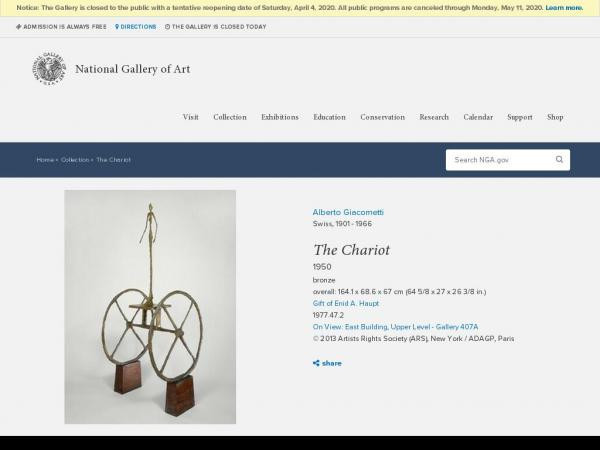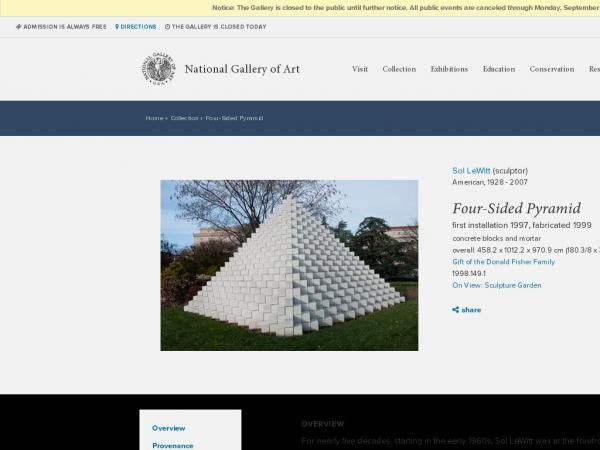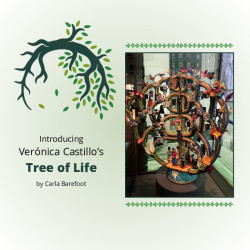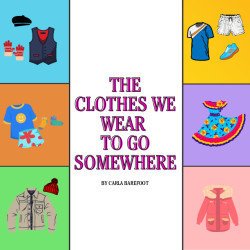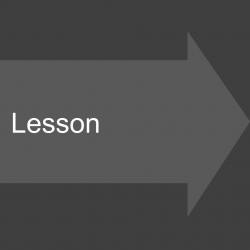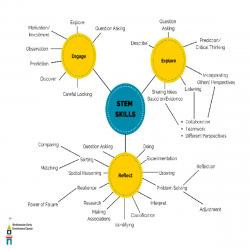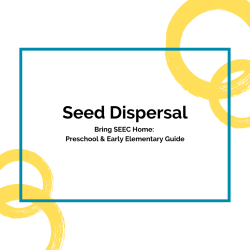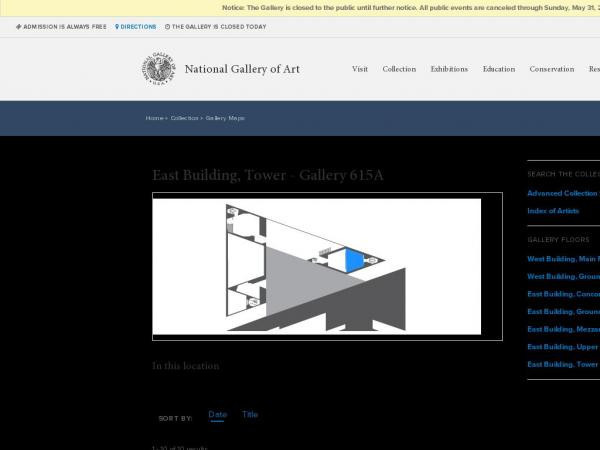Smithsonian Early Enrichment Center
Nestled in the nation’s capital in the richest museum complex in the world is the Smithsonian Early Enrichment Center, a model early childhood program that places children at the center of every experience. SEEC utilizes an emergent curriculum, following the children's interests to teach content and developmental skills through objects in the museums and community.
Smithsonian Early Enrichment Center's collections
Women as Pioneers of Technology: Invention and Contribution
<p>This Learning Lab collection was created by Ngan Vo, a student in the summer 2022 Smithsonian Digital Learning and Engagement Internship, in collaboration with Emerson Collective. </p>
<p>This collection draws from the Smithsonian Early Enrichment Center’s approach to object-based learning and aims to remedy gender bias in the classroom, particularly regarding STEM-based subjects. By showcasing women as trailblazers of technology, the collection hopes to spark confidence and gauge interest from young girls to participate in STEM endeavors. </p>
<p>#SAintern #SEEC</p>
 Smithsonian Early Enrichment Center
Smithsonian Early Enrichment Center
16
Wheels and Axles
<p>Objectives:</p>
<ul><li>Identify the shape of a wheel</li><li>Experiment with differently shaped wheels </li><li>Learn that wheels and axles help heavy things move </li></ul>
 Smithsonian Early Enrichment Center
Smithsonian Early Enrichment Center
9
The Clothes We Wear To Go Somewhere
<p>This collection centers a book that tells the story of different clothing pieces in the Smithsonian collection that have played a role in Latine history while also discussing the different functions that a piece of clothing can have in our lives. Whether it be for identity expression, for functionality, to convey a message or performance, or to be safe in our environment. The collection also includes an educator note that provides additional context on the items as well as links to the items that are available on Learning Lab. Intended for ages 0-3.<br></p>
<p>Created by Carla Barefoot, an Office of Engagement intern at the Smithsonian Early Enrichment Center.<br></p>
 Smithsonian Early Enrichment Center
Smithsonian Early Enrichment Center
5
Take a Woolly Mammoth & Mastodon Out to Dinner
<p>This lesson is about the extinct relatives of the modern elephant - woolly mammoth and mastodons. By looking at the teeth of these animals, scientists can discover what the animals are capable of eating and figure out how species are the same and different. Children are encouraged to look closely at woolly mammoth and mastodon teeth and describe how they are similar and different. Children will explore how different teeth allow animals to eat different types of food. To finish the lesson, they will take puppet woolly mammoths and mastodons (which they make) out to eat. </p>
<p>Designed as part of the Get a Head Start with the Smithsonian collaboration with the National Head Start Association, these activities support the following Head Start Early Learning Outcomes Framework (ELOF) standards:</p>
<p>- Goal P-LC 1. Child attends to communication and language from others.</p>
<p>- Goal P-LC 2. Child understands and responds to increasingly complex communication and language from others.<br></p>
<p>- Goal P-LIT 2. Child demonstrates an understanding of how print is used (functions of print) and the rules that govern how print works (conventions of print).</p>
<p>- Goal P-LIT 5: Child asks and answers questions about a book that was read aloud.</p>
<p>- Goal P-ATL 11. Child shows interest in and curiosity about the world around them.</p>
<p>- Goal P-ATL 13. Child uses imagination in play and interactions with others.<br></p>
<p>- Goal P-SCI 1. Child observes and describes observable phenomena (objects, materials, organisms, and events).</p>
<p>- Goal P-SCI 2. Child engages in scientific talk.</p>
<p>- Goal P-SCI 3. Child compares and categorizes observable phenomena.</p>
<p>- Goal P-SCI 5. Child plans and conducts investigations and experiments.</p>
<p>- Goal P-SCI 6. Child analyzes results, draws conclusions, and communicates results.</p>
<p><strong>Goals for Scaffolding for Infants/Toddlers:</strong></p>
<p>- Goal IT-LC 12. Child comprehends meaning from pictures and stories.</p>
<p>- Goal IT-ATL 7. Child shows interest in and curiosity about objects, materials, or events.</p>
<p>- Goal IT-ATL 8. Child uses creativity to increase understanding and learning.</p>
<p>- Goal IT-C 1. Child actively explores people and objects to understand self, others, and objects.</p>
<p>- Goal IT-C 2. Child uses understanding of causal relationships to act on social and physical environments.</p>
 Smithsonian Early Enrichment Center
Smithsonian Early Enrichment Center
20
STEAM: Cross-curricular Connections for Young Learners
<p>Artwork, museums, and the community are powerful resources that bring concepts to life with young children. This collection provides examples of how to utilize museums and the community to explore STEM concepts through artwork. </p>
<p>This collection was created by a Smithsonian Early Enrichment faculty member to support a <a href="https://www.youtube.com/watch?v=DvnS1yxWT0w" target="_blank">webinar</a> with the Smithsonian Center for Learning and Digital Access, presented in October 24, 2018. </p>
<p><br /></p>
<p></p>
 Smithsonian Early Enrichment Center
Smithsonian Early Enrichment Center
81
Spoons
<p>You may think of spoons as everyday objects, but spoons can tell special stories and teach us about cultures. Explore this collection to learn more. </p><p>This collection was created by Smithsonian Early Enrichment Center faculty member. #SEECStories<br /></p>
 Smithsonian Early Enrichment Center
Smithsonian Early Enrichment Center
84
Sink Float
<p>OBJECTIVES:</p>
<ul><li>Experiment with objects to see if they sink or float</li><li>Learn that boats float</li><li>Discuss how sometimes boats sink and learn the word shipwreck </li><li>Look closely at the 3D model of the Philadelphia Gunboat (a boat which sunk and was then later brought to the surface and into the Natural History Museum)</li><li>Make ships out of aluminum foil and experiment to see how many pennies can go on the boat before it sinks</li></ul>
 Smithsonian Early Enrichment Center
Smithsonian Early Enrichment Center
22
Robots that Help
<p>OBJECTIVES:<br /></p>
<ul><li>Learn that people make robots to do things to help people </li><li>Look closely at a robot that some people have in their house</li><li>Learn about other types of helping robots </li><li>Talk about why robots are made</li><li>Learn that robots are designed with a purpose </li><li>Think about times when it might be helpful to have a robot </li><li>Use creativity to design robots </li></ul>
 Smithsonian Early Enrichment Center
Smithsonian Early Enrichment Center
22
Riding on a Carousel
<p>OBJECTIVES</p><ul><li>Look carefully at a variety of carousel animals </li><li>Identify the animals </li><li>Compare and contrast the animals </li><li>Talk about which animals people typically ride</li><li>Talk about real vs pretend</li><li>Create a model carousel</li></ul>
 Smithsonian Early Enrichment Center
Smithsonian Early Enrichment Center
26


